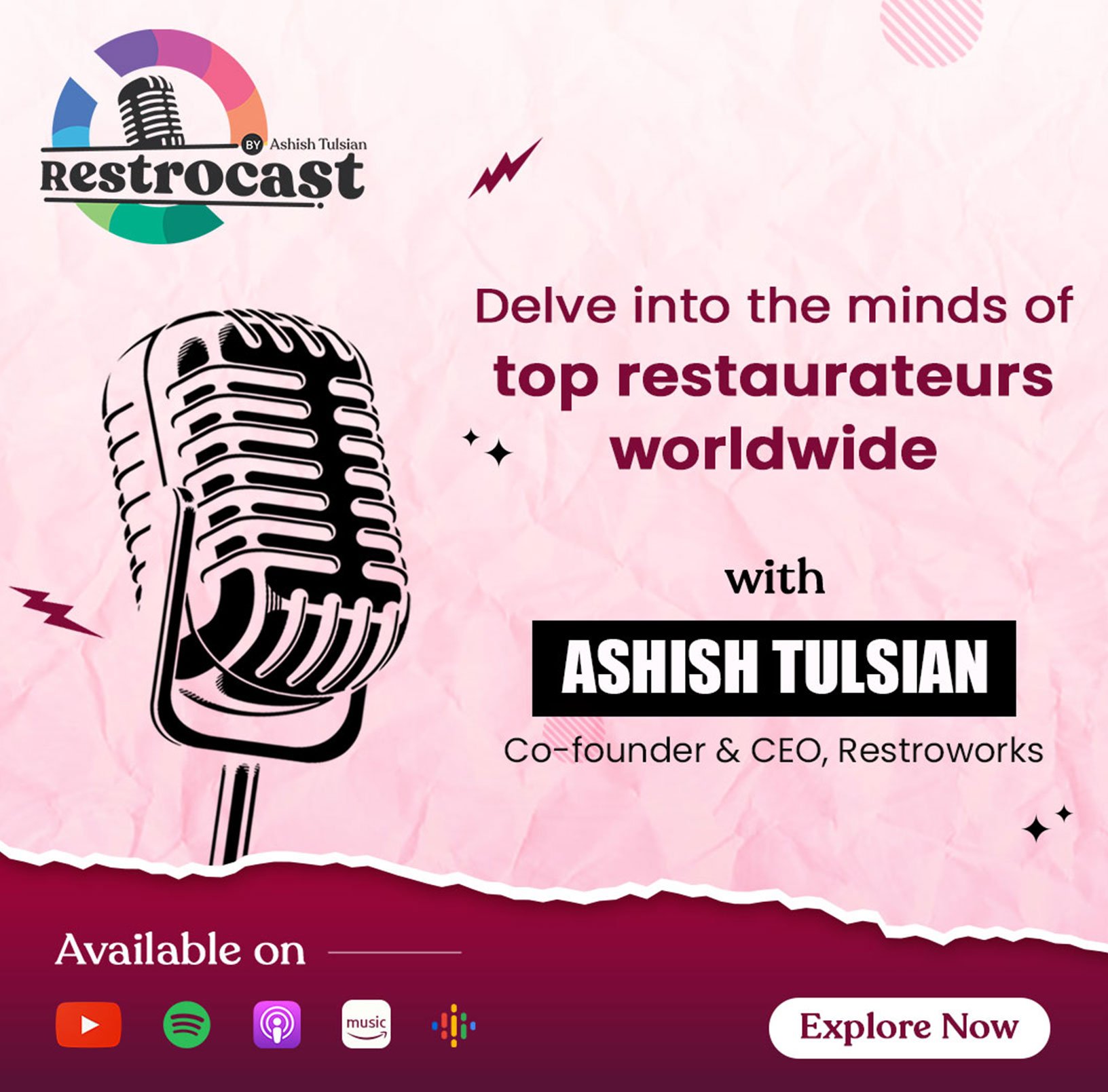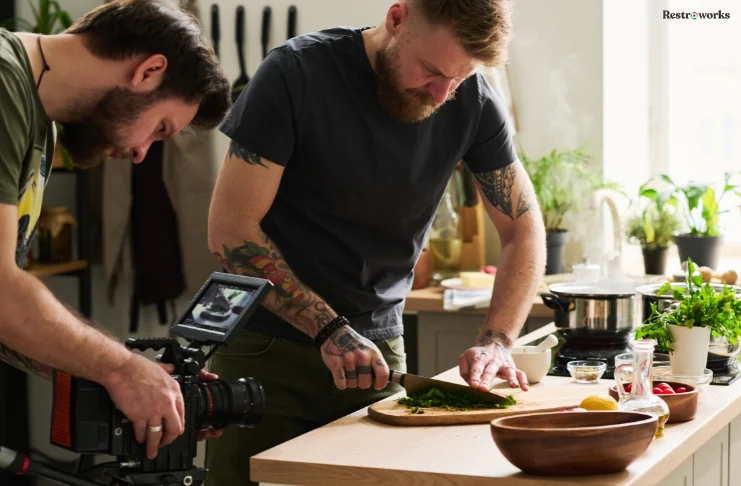
Overview
Video content has become essential to the restaurant marketing mix in 2024, completely changing how potential customers interact with the establishment. When restaurants engage in video marketing on digital platforms, they offer their audience a captivating visual experience, showcasing what it feels like to visit their establishment. Through these videos, potential customers can glimpse the ambiance, the culinary delights, and the overall atmosphere, creating an enticing preview that encourages them to visit. Developing a comprehensive video marketing strategy ensures that video marketing content effectively resonates with the target audience across various social media platforms. By consistently creating videos, restaurants can stay relevant and competitive in the ever-evolving restaurant industry.
Video marketing integration draws more attention to the restaurant and expands audience reach more effectively than many conventional advertising techniques. Leveraging the power of video marketing, restaurants can create engaging video content such as promotional videos and video ads to showcase their offerings and attract customers. Capturing aspects like food preparation and special events in these engaging videos can further entice viewers and drive interest. As a restaurant owner, investing in video material and incorporating it into your digital marketing strategy can yield significant returns and enhance brand visibility.
Furthermore, because video content is so flexible, it can be successfully shared on social media and on the restaurant’s website, therefore raising awareness of the business much beyond its actual location. Video marketing is a potent instrument in the marketing toolbox because of its impactful and dynamic character, which raises consumer engagement and brand awareness.
How to Plan a Strategy for Restaurant Video Marketing
Restaurant video marketing requires setting goals, researching the targeted demographic, developing interest-based material, employing high-quality tools, working with experts, and spreading the videos through various channels. Incorporating elements like high-quality photos of signature dishes and customer testimonials can enhance the impact of the videos. Offering a virtual tour of the restaurant can also provide viewers with an immersive experience. It’s essential to create compelling content that resonates with the audience and encourages them to engage further. Once created, share videos across different platforms to maximize visibility and engagement.
Additionally, this plan requires generating actionable ideas for producing engaging content and identifying the necessary resources (software, props, equipment) to create it.
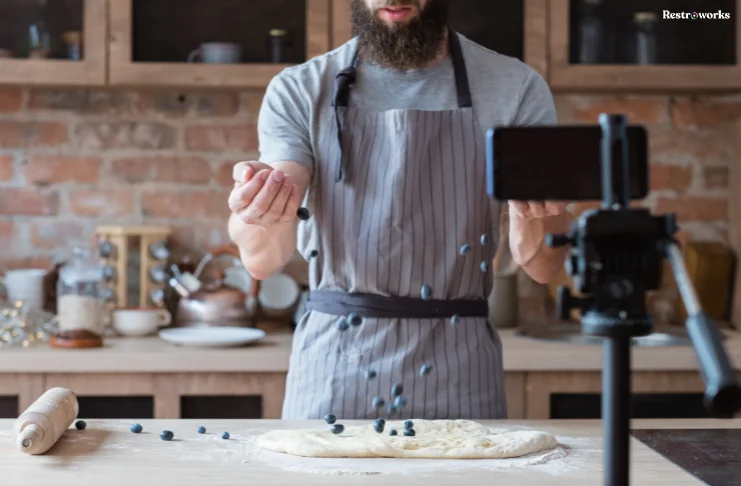
1. Create Engaging Content
Engaging content for restaurant video marketing can be spread into the following categories:
Collaborating with an Influencer
Behind-the-scenes tours
Client testimonials
User-created content
2. Essential Tools and Costs for Video Production
For restaurant video marketing, you can start with essential tools. Use your smartphone and free editing software like Filmora for an affordable option.
If you opt for professional production then here is the breakdown of the cost of resources:
Camera Equipment:
High-Quality Camera: Cameras suitable for professional video marketing can range from $1,000 to $5,000. Popular choices include the Canon EOS R5 or Sony A7S III.
Microphone:
We recommend options like the Rode VideoMic Pro ($150) or the Shure MV88+ ($249).
Lighting Equipment:
Softbox Lights: Kits typically range from $50 to $200.
LED Panels: Prices vary, with high-quality panels costing between $150 to $500.
Stabilization Gear:
Tripods: A stable tripod is essential, with prices ranging from $50 to $200.
Gimbals: Gimbals like the DJI Ronin-SC can cost around $439 for smooth motion shots.
Video Editing Software:
Adobe Premiere Pro is a popular professional choice, costing $20.99 monthly.
Final Cut Pro: For Mac users, a one-time purchase of $299.99.
Pro Tip: You can save money by renting equipment instead of buying it or learning to edit videos. If you prefer professional quality without the effort, you should hire a marketing agency. They handle everything from video creation to editing, ensuring your content looks top-notch and engages your customers effectively.
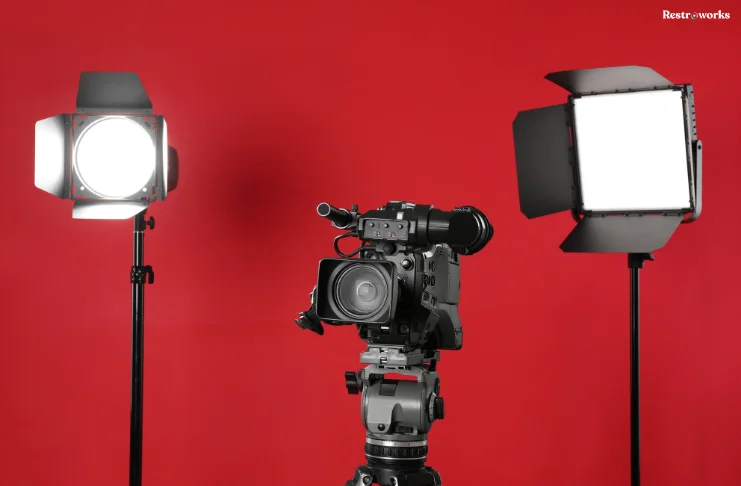
Restaurant Video Marketing: Format Best Practices
Here’s how you can optimize video content for various platforms:
| Platform | Format | Aspect Ratio | Recommended Length | Recommended Resolution | Suggested Posting Time |
| YouTube | Conventional | 16:9 | Under 10 minutes | 1080p or greater | Weekdays: 2-4 PM, 7-9 PM |
| YouTube | Shorts | 9:16 | Under 60 seconds | 1080p or greater | Weekdays: 2-4 PM, 7-9 PM |
| Stories | 9:16 | Up to 15 seconds per slide | 1080p or greater | Weekdays: 11 AM – 1 PM, 7-9 PM | |
| Reels | 9:16 | Up to 90 seconds | 1080p or greater | Weekdays: 11 AM – 1 PM, 7-9 PM | |
| TikTok | All Videos | 9:16 | Short form preferred | 1080p or greater | Weekdays: 6-10 AM, 7-11 PM |
| Feed Videos | 16:9 or 1:1 | Up to 3 minutes | 1080p or greater | Weekdays: 1-4 PM, 6-8 PM | |
| Stories | 9:16 | Up to 20 seconds per slide | 1080p or greater | Weekdays: 1-4 PM, 6-8 PM |
Video Marketing Strategy for Restaurants: Top Tips
Don’t rush if you are not immediately able to produce high-quality content. Well-planned content always shines better than poorly produced content.
Keep your videos short. Start with hooks that catch the attention of the users.
Many people watch videos without sound, adding captions and subtitles ensures everyone understands your message. Use bold text to highlight important points.
Post videos at least three times a week. It will keep your audience interested, increase engagement, and help you build a loyal following.
Announce special deals, seasonal menus, and promotions through videos or live streams. This helps drive interest and fills seats during slower times.
Create a buzz by hosting live music, stand-up comedies, poetry, or discussions on trending topics. These activities naturally draw the viewer to participate in the event actively or passively.
Launching and Promoting Your Restaurant Videos
Creating engaging videos is the first step; launching and promoting them effectively is crucial for maximizing their impact.
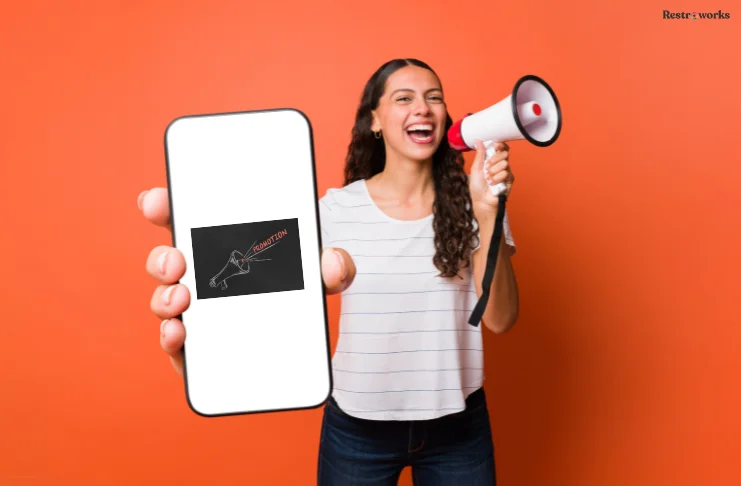
1. Effective Launch Strategies
Start a teaser campaign utilizing brief clips or photos to create excitement for your restaurant’s marketing film. Then, to create buzz, throw an online or live premiere event. Running focused advertisements on social media sites will increase your audience. Send out emails to your subscriber list announcing the video. For the most exposure and interaction, embed the video or create a special post on your website or blog.
2. Initial Promotional Tactics
Start by posting your video with engaging captions all over social media. Contact influencers and food bloggers to interact with your content to get more visibility. Organize prizes and competitions to promote sharing, get together with other companies to cross-promote, etc. to increase the online visibility of your restaurant.
3. Integrating Videos Into Broader Marketing Campaigns
Post videos on your website’s main pages, including the “about us” section, menu, and homepage. Post regular social media video snippets, behind-the-scenes videos, or client endorsements. Email newsletters with video links to subscribers will also impact the number of visitors. Use paid social media or Google advertisements to show these videos to a larger audience for increased interaction. You can submit your video to regional newspapers or food blogs for more coverage.

4. Leveraging Social Media for Shares and Virality
Here are actionable tips for leveraging social media for shares and virality:
Align with Trends: Create content around current trends to engage an engaged audience.
Use Emotions: Post content that evokes strong emotions like joy, surprise, or nostalgia to encourage shares.
Incorporate Visuals: Use eye-catching images and videos as they are more likely to be shared.
Encourage UGC: Prompt your audience to create and share their content related to your brand.
Be Authentic: Ensure your content is genuine and true to your brand’s identity.
Optimize Posting Times: Share content when your audience is most active to maximize engagement.
Use Snippets from Long-form Videos: Extract short snippets from long-form videos and publish them on social media to keep the audience entertained.
Analytics and Optimization for Performance
Video performance evaluation is essential to understanding what works and what doesn’t. It refines your strategy every time you implement changes, and this activity will give you enhanced results over time.
Key Performance Indicators (KPIs) to track:
Views or impressions that let you tell your discoverability.
Watch Time to gauge the interest.
Engagement Rate to determine the potential customers.
Conversion Rate to know how many potential clients you are retaining.
Platform analytics: YouTube Analytics, Instagram/Facebook Insights, TikTok Analytics
Third-party tools: Google Analytics, Social Media Management Tools (such as Hootsuite and Sprout Social), Video Analytics Platforms (like Tubular Labs and VidIQ)

Tips on Using Analytics to Refine and Improve Video Content
Find the Best Videos: Look at which type of videos get the most views, watch time, and interact. Find topics, styles, and forms used in many videos and use them in more videos. Essentially locate and identify trends and try to implement them in your content.
Find out what your audience wants: Check the demographics to see who is watching your videos. Make the content fit their likes and interests.
Optimize Video Length: Look at the watch time to see if people leave at certain parts. To keep viewers interested, cut the videos or add more engaging content.
Try Out Different Formats: Make videos (recipes, behind-the-scenes, interviews, etc.) and see which ones do best on each site.
Test several different calls to action (CTAs): Check out which calls to action get the most results. Try using different words and places to get the best results.
Keep an eye on competitors: Pay attention to what other places in the same niche are doing that seems to be working. Find ideas and take inspiration, but don’t copy them exactly.
Always know what’s new in video marketing. Trends change quickly, and restaurant owners and marketers must monitor them regularly to stay informed.
Video Marketing of Burger King Through ‘Whopper Detour’
Key Insights:
Disruptive innovation and technological integration can captivate consumers.
Humor enhances virality and engagement.
Meticulous result measurement is essential.
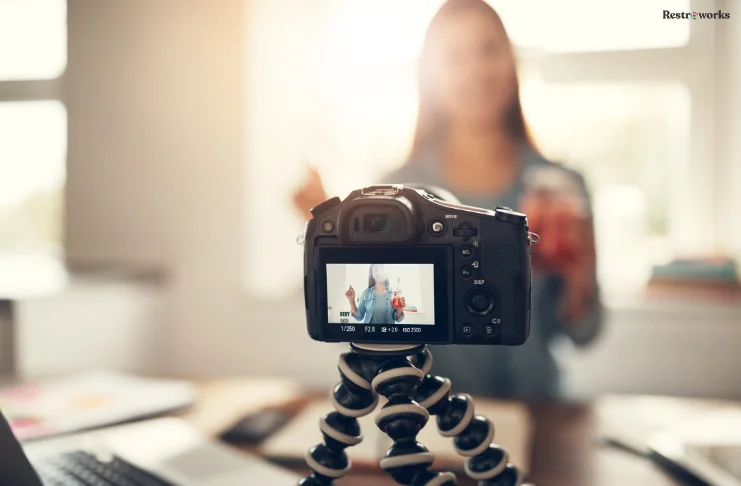
Frequently Asked Questions
Your demands determine the optimal plan, which includes audience comprehension, consistent branding, a strong web presence, targeted promotions, and community engagement.
Restaurant marketing includes social media, SEO, email campaigns, print, radio/TV commercials, and experiential marketing (events, collaborations, loyalty programs).
Restaurant marketing includes social media, SEO, email campaigns, print, radio/TV commercials, and experiential marketing (events, collaborations, loyalty programs).
Include appealing culinary photos, ambiance, your restaurant’s story, and a clear call to action. The ideal video length is about 1-2 minutes.
Define your goals, plan the content, choose the right platform, shoot with good-quality equipment, and edit the content to fit the needs of your restaurant.

